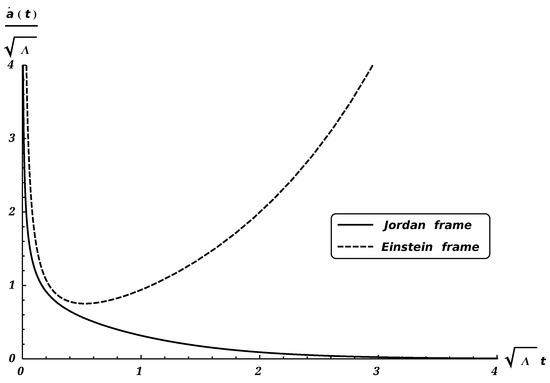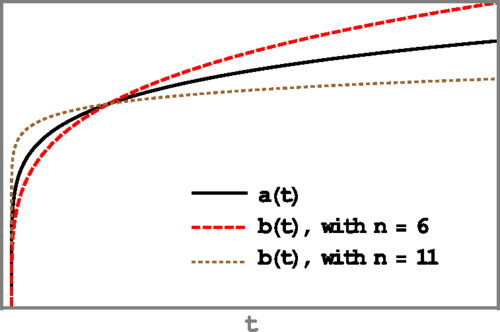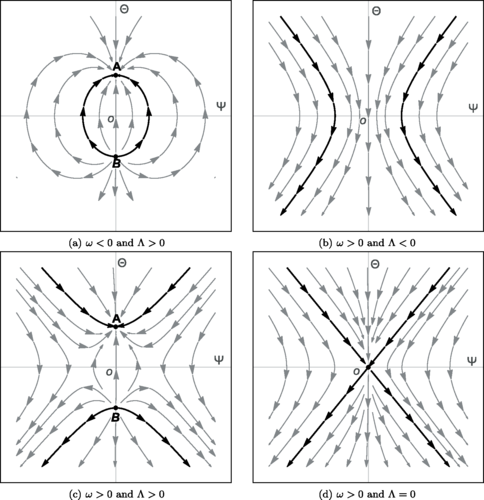Publicações
publicações por categoria em ordem cronológica reversa. gerado pelo jekyll-scholar.
2024
- Photonic entanglement with accelerated lightR. C. Souza Pimenta, G. H. dos Santos, A. B. Barreto, and 2 more authorsQuantum, 2024
Accelerated light has been demonstrated with laser light and diffraction. Within the diffracting field it is possible to identify a portion that carries most of the beam energy, which propagates in a curved trajectory as it would have been accelerated by a gravitational field for instance. Here, we analyze the effects of this kind of acceleration over the entanglement between twin beams produced in spontaneous parametric down-conversion. Our results show that acceleration does not affect entanglement significantly, under ideal conditions. The optical scheme introduced can be useful in the understanding of processes in the boundary between gravitation and quantum physics.
@article{Pimenta_2024, title = {Photonic entanglement with accelerated light}, volume = {8}, issn = {2521-327X}, url = {http://dx.doi.org/10.22331/q-2024-04-30-1317}, doi = {10.22331/q-2024-04-30-1317}, journal = {Quantum}, publisher = {Verein zur Forderung des Open Access Publizierens in den Quantenwissenschaften}, author = {Pimenta, R. C. Souza and Santos, G. H. dos and Barreto, A. B. and Celeri, L. C. and Ribeiro, P. H. Souto}, year = {2024}, pages = {1317}, dimensions = {true}, }
2023
- Metamaterial branesF. A. P. Alves-Junior, A. B. Barreto, e F. MoraesNucler Physics B, 2023
In this article, we propose metamaterials analog brane models based on the geometric optics approach. We show how to model the Randall-Sundrum thin brane model and the Gremm model for a thick brane. We incorporate the Yukawa-like confinement mechanics for thick branes in the analog system and show an asymmetrical analog brane model with and without the confinement mechanisms.
@article{alvesjunior2023metamaterial, title = {Metamaterial branes}, author = {Alves-Junior, F. A. P. and Barreto, A. B. and Moraes, F.}, year = {2023}, eprint = {2302.13998}, archiveprefix = {arXiv}, primaryclass = {hep-th}, volume = {998}, issn = {0550-3213}, doi = {10.1016/j.nuclphysb.2023.116407}, number = {}, journal = {Nucler Physics B}, publisher = {Elsevier}, dimensions = {true}, }
2021
- Implications of Kleinian relativityF. A. P. Alves-Júnior, A. B. Barreto, e F. MoraesPhysical Review D, 2021
Inspired in metamaterials, we present a covariant mechanics for particles in Kleinian spacetime and show some of its effects, such as time contraction and length dilatation. We present the new expressions for relativistic momentum and energy for a pointlike particle. To illustrate the new mechanics, we describe the particle motion under a uniform Newtonian gravitational field. We also revisit the free spin-half particle problem in Kleinian spacetime, discuss some quantum implications, like the constraint on the dispersion relation for Weyl fermions, and adapt a metamaterial analog system to Klein spacetime.
@article{Alves_J_nior_2021, title = {Implications of Kleinian relativity}, volume = {103}, doi = {10.1103/physrevd.103.044023}, number = {4}, journal = {Physical Review D}, publisher = {American Physical Society (APS)}, author = {Alves-Júnior, F. A. P. and Barreto, A. B. and Moraes, F.}, year = {2021}, dimensions = {true}, }
2020
- Cosmological Solutions for the Geometrical Scalar-Tensor with the Potential Determined by the Noether Symmetry ApproachAdriano B. Barreto e Gilberto M. KremerSymmetry, 2020
In this work we consider a scale-tensor theory in which the space-time is endowed with a Weyl integrable geometrical structure due to the Palatini variational method. Since the scalar field has a geometrical nature (related to non-metricity), the theory is known as \textitGeometrical Scalar-Tensor. On the framework of Weyl transformations, a non-minimally coupled scalar-tensor theory on the Jordan frame corresponds to a minimally coupled Einstein-Hilbert action on the Einstein frame. The scalar potential is selected by the Noether symmetry approach in order to obtain conserved quantities for the FRW cosmological model. Exact solutions are obtained and analyzed in the context of the cosmological scenarios consistent with an expanding universe. A particular case is matched in each frame and the role of scalar field as a dark energy component is discussed.
@article{Barreto_2020, title = {Cosmological Solutions for the Geometrical Scalar-Tensor with the Potential Determined by the Noether Symmetry Approach}, volume = {12}, doi = {10.3390/sym12071110}, number = {7}, journal = {Symmetry}, publisher = {MDPI AG}, author = {Barreto, Adriano B. and Kremer, Gilberto M.}, year = {2020}, pages = {1110}, dimensions = {true}, }
2018
- Quantum cosmology in an anisotropic n-dimensional universeF. A. P. Alves-Jr, M. L. Pucheu, A. B. Barreto, and 1 more authorPhysical Review D, 2018
We investigate quantum cosmological models in an n-dimensional anisotropic universe in the presence of a massless scalar field. Our basic inspiration comes from Chodos and Detweiler’s classical model, which predicts interesting behavior of the extra dimension, shrinking down as time goes by. We work in the framework of a recent geometrical scalar-tensor theory of gravity. Classically, we obtain two distinct types of solutions. One of them has an initial singularity, while the other represents a static universe considered as a whole. By using the canonical approach to quantum cosmology, we investigate how quantum effects could have had an influence in the past history of these universes.
@article{Alves_J_nior_2018, title = {Quantum cosmology in an anisotropic n-dimensional universe}, volume = {97}, issn = {2470-0029}, doi = {10.1103/physrevd.97.044007}, number = {4}, journal = {Physical Review D}, publisher = {American Physical Society (APS)}, author = {Alves-Jr, F. A. P. and Pucheu, M. L. and Barreto, A. B. and Romero, C.}, year = {2018}, dimensions = {true}, } - A brief note on Weyl frames and canonical transformations in geometrical scalar–tensor theories of gravityA B Barreto, M L Pucheu, e C RomeroClassical and Quantum Gravity, 2018
We consider scalar-tensor theories of gravity defined in Weyl integrable space-time and show that in the ADM formalism Weyl transformations corresponding to change of frames induce canonical transformations between different representations of the phase space. In this context, we discuss the physical equivalence of two distinct Weyl frames at the classical level.
@article{Barreto_2018, title = {A brief note on Weyl frames and canonical transformations in geometrical scalar–tensor theories of gravity}, volume = {35}, issn = {1361-6382}, doi = {10.1088/1361-6382/aaa53c}, number = {4}, journal = {Classical and Quantum Gravity}, publisher = {IOP Publishing}, author = {Barreto, A B and Pucheu, M L and Romero, C}, year = {2018}, pages = {047001}, dimensions = {true}, }
2016
- Cosmological models in Weyl geometrical scalar-tensor theoryM. L. Pucheu, F. A. P. Alves Junior, A. B. Barreto, and 1 more authorPhysical Review D, 2016
We investigate cosmological models in a recently proposed geometrical theory of gravity, in which the scalar field appears as part of the spacetime geometry. We extend the previous theory to include a scalar potential in the action. We solve the vacuum field equations for different choices of the scalar potential and give a detailed analysis of the solutions. We show that, in some cases, a cosmological scenario is found that seems to suggest the appearance of a geometric phase transition. We build a toy model, in which the accelerated expansion of the early Universe is driven by pure geometry.
@article{Pucheu_2016, title = {Cosmological models in Weyl geometrical scalar-tensor theory}, volume = {94}, issn = {2470-0029}, doi = {10.1103/physrevd.94.064010}, number = {6}, journal = {Physical Review D}, publisher = {American Physical Society (APS)}, author = {Pucheu, M. L. and Alves Junior, F. A. P. and Barreto, A. B. and Romero, C.}, year = {2016}, dimensions = {true}, }
2015
- Extending the ADM formalism to Weyl geometryA. B. Barreto, T. S. Almeida, e C. Romero2015
In order to treat quantum cosmology in the framework of Weyl spacetimes we take the first step of extending the Arnowitt-Deser-Misner formalism to Weyl geometry. We then obtain an expression of the curvature tensor in terms of spatial quantities by splitting spacetime in (3+l)-dimensional form. We next write the Lagrangian of the gravitation field based in Weyl-type gravity theory. We extend the general relativistic formalism in such a way that it can be applied to investigate the quantum cosmology of models whose spacetimes are endowed with a Weyl geometrical structure.
@article{Barreto_2015, title = {Extending the ADM formalism to Weyl geometry}, doi = {10.1063/1.4913344}, publisher = {AIP Publishing LLC}, author = {Barreto, A. B. and Almeida, T. S. and Romero, C.}, year = {2015}, dimensions = {true}, } - Space-time singularities in Weyl manifoldsI. P. Lobo, A. B. Barreto, e C. RomeroThe European Physical Journal C, 2015
We extend one of the Hawking–Penrose singularity theorems in general relativity to the case of some scalar-tensor gravity theories in which the scalar field has a geometrical character and space-time has the mathematical structure of a Weyl integrable space-time. We adopt an invariant formalism, so that the extended version of the theorem does not depend on a particular frame.
@article{Lobo_2015, title = {Space-time singularities in Weyl manifolds}, volume = {75}, issn = {1434-6052}, doi = {10.1140/epjc/s10052-015-3671-7}, number = {9}, journal = {The European Physical Journal C}, publisher = {Springer Science and Business Media LLC}, author = {Lobo, I. P. and Barreto, A. B. and Romero, C.}, year = {2015}, dimensions = {true}, }












